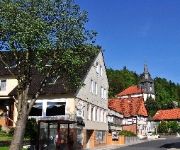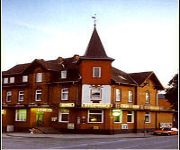Facts and Data
Webpages:
Official Unesco Page
UNESCO-Welterbe Fagus-Werk (in German)
Fagus GreCon
Basis Data:
Unesco World heritage since: 2011
Size of heritage: 1.88 ha
- Buffer zone: 19 ha
Coordinates:
Longitude: 9,811°
Latitude: 51,984°
Summary
Fagus Factory in Alfeld is a 10-building complex - began around 1910 to the design of Walter Gropius, which is a landmark in the development of modern architecture and industrial design. Serving all stages of manufacture, storage and dispatch of lasts used by the shoe industry, the complex, which is still operational today, is situated in Alfeld an der Leine in Lower Saxony. With its groundbreaking vast expanses of glass panels and functionalist aesthetics, the complex foreshadowed the work of the Bauhaus school and is a landmark in the development of architecture in Europe and North America.
Location on Map
Show bigger map on Openstreetmap
The Fagus Factory in Alfeld, Germany
The Fagus Factory, located in Alfeld, Germany, is a UNESCO World Heritage site that holds immense historical and architectural significance. Designed by the renowned architect Walter Gropius, this factory complex is considered a pioneering masterpiece of modern industrial architecture.
History
The Fagus Factory was constructed between 1911 and 1913 for the Fagus shoe last company, which specialized in manufacturing wooden shoe lasts. Gropius, along with his partner Adolf Meyer, was commissioned to design a factory that would reflect the company's innovative spirit and modern approach to industrial production.
Gropius's design for the Fagus Factory was groundbreaking for its time. It embraced the principles of the emerging modernist movement, characterized by simplicity, functionality, and the use of new materials such as glass and steel. The factory's design incorporated large glass surfaces, open floor plans, and a steel skeleton structure, which allowed for maximum natural light and efficient use of space.
Notably, the Fagus Factory was one of the first buildings to employ curtain wall construction, where the exterior walls are non-structural and made primarily of glass. This innovative technique revolutionized architectural design and became a hallmark of modernist architecture.
Current State
Today, the Fagus Factory stands as a testament to the early days of modern industrial architecture. It has been meticulously preserved and restored, allowing visitors to experience the factory's original design and atmosphere.
The factory complex consists of several interconnected buildings, including the main production hall, administrative offices, and a warehouse. The main production hall, with its iconic glass façade, remains the focal point of the site. Inside, visitors can explore the spacious and light-filled interior, which showcases the factory's innovative design and functional layout.
The Fagus Factory also houses a museum that provides a comprehensive overview of the factory's history, architecture, and its impact on modernist design. The museum features a collection of photographs, drawings, and artifacts that highlight the factory's significance in the development of industrial architecture.
Furthermore, the factory complex continues to serve its original purpose as a shoe last manufacturing facility. The Fagus-GreCon Group, a company that specializes in wood processing technology, now operates within the historic factory buildings. This unique combination of historical preservation and modern industrial production adds to the site's cultural and economic value.
The Fagus Factory in Alfeld stands as a remarkable example of the early 20th-century architectural revolution. Its innovative design, use of materials, and functional layout continue to inspire architects and designers worldwide. As a UNESCO World Heritage site, it serves as a reminder of the importance of preserving and celebrating our architectural heritage.
Hotels and places to stay
Am Schlehberg
Grüner Wald Hotel Gasthof
Land-gut-Hotel Räuber Lippoldskrug
Zur Eule
Lampes Posthotel
Steinhoff
Videos from the area
Videos provided by Youtube are under the copyright of their owners.
















